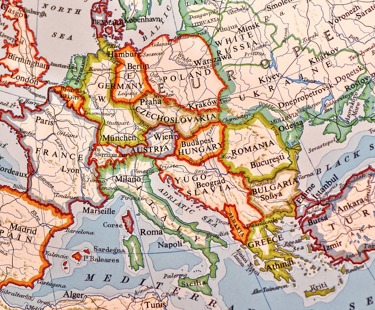Double patenting relates to a situation where two patents are granted to the same proprietor in the same country for a single invention. There is no explicit prohibition of double patenting in the European Patent Convention (EPC). However, the EPO have taken account of principals of procedural law generally recognised in the contracting states. These principles are based on the notion that a proprietor has no legitimate interest in two patents claiming the same subject matter. Under current EPO practice, this is likely only to be an issue if the claims of the two patents are identical in scope (and any overlapping designations are not withdrawn). However, the Enlarged Board of Appeal are currently considering the EPO’s approach to double patenting in G4/19.
Double patenting considerations may apply to three combinations of European applications by the same applicant:
1. Two applications filed on the same day.
2. Parent and divisional applications.
3. An application and its priority application.
The question has arisen as to whether a European patent application can be refused if it claims the same subject matter as another European patent granted to the same applicant under these situations. If so, what are the conditions for such a refusal? What may represent a “legitimate interest” for double patenting?
For example, it is common for an applicant to seek to quickly obtain a first patent with claims directed to a narrow embodiment, and pursue the general teaching in a divisional application with a broader scope of claims. Under current EPO practice, this is considered as a “legitimate interest” and no double patenting issues arise if the scope of claims clearly differs.
However, more complicated situations may arise where the language of the claims is non-identical, but covers essentially the same embodiment. In addition, it is currently not clear if the prohibition on double patenting applies in situations where there are multiple applicants, but only one applicant in common between the two applications. Similarly, it is not clear if the prohibition applies if rights are assigned to a different applicant.
Moreover, the case in G4/19 relates to the specific situation where both an application and its priority application are pursued to grant. European application (EP2) was filed on 7 May 2010 and claimed priority to an earlier European application (EP1) filed on 11 May 2009. Under EPO practice, the filing date (not priority date) is relevant for calculating the maximum expiry date of the European patent. The maximum term of expiry of EP1 is May 2029. However, the maximum term of expiry of EP2 is May 2030. Does this additional year’s patent term represent a legitimate interest for double patenting?
Hopefully, the Enlarged Board of Appeal will provide some clarity in the law with respect to these questions in the near future. We will provide further commentary once the Enlarged of Board of Appeal reach their decision. If you would like any further information in the meantime, please do not hesitate to contact us.


